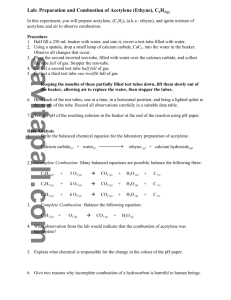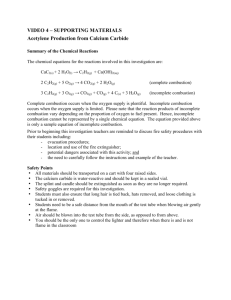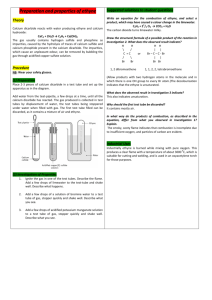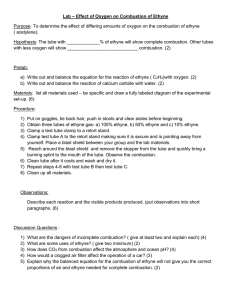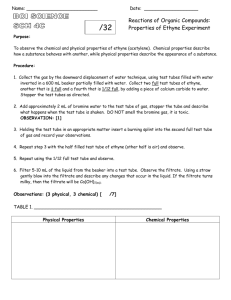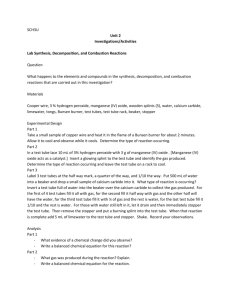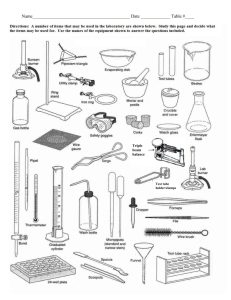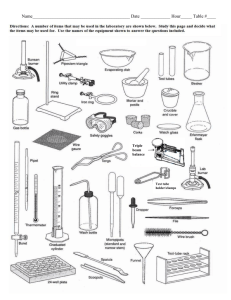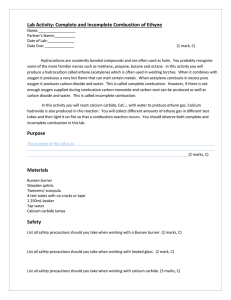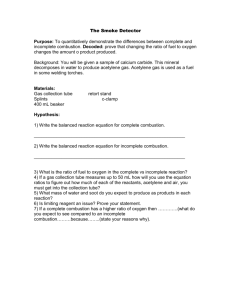Production of Ethyne Gas from Calcium Carbide
advertisement
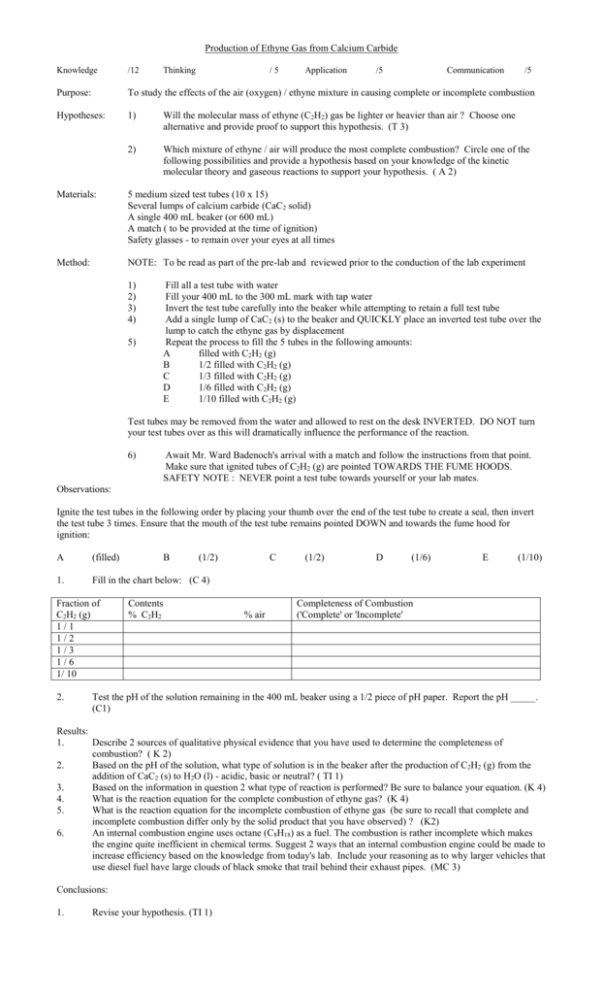
Production of Ethyne Gas from Calcium Carbide
Knowledge
/12
Thinking
/5
Application
/5
Communication
/5
Purpose:
To study the effects of the air (oxygen) / ethyne mixture in causing complete or incomplete combustion
Hypotheses:
1)
Will the molecular mass of ethyne (C2H2) gas be lighter or heavier than air ? Choose one
alternative and provide proof to support this hypothesis. (T 3)
2)
Which mixture of ethyne / air will produce the most complete combustion? Circle one of the
following possibilities and provide a hypothesis based on your knowledge of the kinetic
molecular theory and gaseous reactions to support your hypothesis. ( A 2)
Materials:
5 medium sized test tubes (10 x 15)
Several lumps of calcium carbide (CaC2 solid)
A single 400 mL beaker (or 600 mL)
A match ( to be provided at the time of ignition)
Safety glasses - to remain over your eyes at all times
Method:
NOTE: To be read as part of the pre-lab and reviewed prior to the conduction of the lab experiment
1)
2)
3)
4)
5)
Fill all a test tube with water
Fill your 400 mL to the 300 mL mark with tap water
Invert the test tube carefully into the beaker while attempting to retain a full test tube
Add a single lump of CaC2 (s) to the beaker and QUICKLY place an inverted test tube over the
lump to catch the ethyne gas by displacement
Repeat the process to fill the 5 tubes in the following amounts:
A
filled with C2H2 (g)
B
1/2 filled with C2H2 (g)
C
1/3 filled with C2H2 (g)
D
1/6 filled with C2H2 (g)
E
1/10 filled with C2H2 (g)
Test tubes may be removed from the water and allowed to rest on the desk INVERTED. DO NOT turn
your test tubes over as this will dramatically influence the performance of the reaction.
6)
Await Mr. Ward Badenoch's arrival with a match and follow the instructions from that point.
Make sure that ignited tubes of C2H2 (g) are pointed TOWARDS THE FUME HOODS.
SAFETY NOTE : NEVER point a test tube towards yourself or your lab mates.
Observations:
Ignite the test tubes in the following order by placing your thumb over the end of the test tube to create a seal, then invert
the test tube 3 times. Ensure that the mouth of the test tube remains pointed DOWN and towards the fume hood for
ignition:
A
(filled)
1.
Fill in the chart below: (C 4)
Fraction of
C2H2 (g)
1/1
1/2
1/3
1/6
1/ 10
2.
B
(1/2)
Contents
% C2H2
C
% air
(1/2)
D
(1/6)
E
(1/10)
Completeness of Combustion
('Complete' or 'Incomplete'
Test the pH of the solution remaining in the 400 mL beaker using a 1/2 piece of pH paper. Report the pH _____.
(C1)
Results:
1.
Describe 2 sources of qualitative physical evidence that you have used to determine the completeness of
combustion? ( K 2)
2.
Based on the pH of the solution, what type of solution is in the beaker after the production of C2H2 (g) from the
addition of CaC2 (s) to H2O (l) - acidic, basic or neutral? ( TI 1)
3.
Based on the information in question 2 what type of reaction is performed? Be sure to balance your equation. (K 4)
4.
What is the reaction equation for the complete combustion of ethyne gas? (K 4)
5.
What is the reaction equation for the incomplete combustion of ethyne gas (be sure to recall that complete and
incomplete combustion differ only by the solid product that you have observed) ? (K2)
6.
An internal combustion engine uses octane (C8H18) as a fuel. The combustion is rather incomplete which makes
the engine quite inefficient in chemical terms. Suggest 2 ways that an internal combustion engine could be made to
increase efficiency based on the knowledge from today's lab. Include your reasoning as to why larger vehicles that
use diesel fuel have large clouds of black smoke that trail behind their exhaust pipes. (MC 3)
Conclusions:
1.
Revise your hypothesis. (TI 1)
